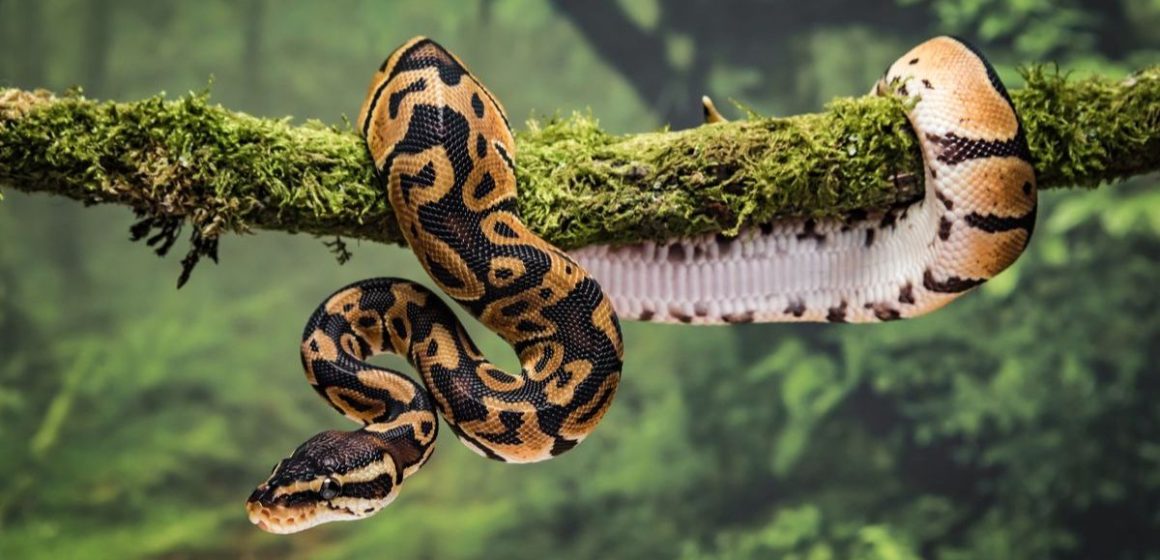SOUTH DAKOTA (DDN) – South Dakota is most known for its plains and Black Hills. Its lakes offer boating, fishing, beaches, and scenic views for holidaymakers. Many of these serene places are home to buffalo, deer, pheasants, herons, and 18 snake species. Watch for South Dakota’s most famous snakes’ slither when hiking, camping, fishing, or riding a horse on a tree-shaded trail.
Sylvan Lake in the Black Hills
Lewis and Clark Lake in southeast South Dakota is famous. The popular campground has hot showers, power connections, and a fish cleaning station for lake fishermen who catch walleye, bass, and catfish. The lake’s wet woodlands are home to the southeast South Dakota Prairie Ringneck Snake.
Prairie Ringnecks have satiny, smooth gray, black, or brown scales and a yellow neck ring. These snakes are harmless, however horses may be alarmed by them sleeping on sunny walkways.
Sylvan Lake in the Black Hills
Sylvan Lake’s natural beauty makes it the Black Hills’ and possibly South Dakota’s most photographed lake. Nice 17-acre lake for sunning, fly fishing, and paddling. Hikers can reach peaceful waterfalls and bridges in a one-mile loop. The Prairie Rattlesnake, South Dakota’s most lethal snake, can hide amid spruce and pine.
Effective predators lurk in deep grass away from people and prey on rodents and other small mammals. Adult snakes have light gray or tan scales, a pale yellow underside, vertical eyes in a triangular head, and dark brown spots rimmed in white along their bodies. They can grow to 50 inches. They are common near prairie dog groups.
Lake Francis Case and Snake Creek
South Dakota has four lovely reservoir lakes on the Missouri River, including Lake Francis Case. This Snake Creek Recreation Area-maintained park is open year-round for outdoor enthusiasts. The Shannon Trail is perfect for a fast hike through Eastern red cedar and snowberry woods. White-tailed mule deer, pheasants, turkeys, and bald eagles eat the rich flora.
During the Lewis & Clark expedition, the locals warned them about “burning bluffs.” Since dense native grasses protected by the environment might hide the Prairie Rattlesnake, hikers should monitor their steps and listen for its rattle.
Sheridan Lake in the Black Hills
One of South Dakota’s best marinas is in the Black Hills. Great fishing is available on this 375-acre lake 15 miles west of Rapid City. Its warm waters allow year-round fishing for northern pike, bass, trout, and perch.
Ice fishermen love the lake in winter. The Black Hills National Forest’s largest campground and swimming facility is at Sheridan Lake. The 11-mile Flume Trail has artifacts of the 1800s Rockerville Flume, which supplied gold miners with water. The Eastern Yellow-Bellied Racer snake, with pale yellow underbelly and greenish-gray or blue scales, lives there.
Stockade Lake in Custer State Park
Custer State Park’s largest lake, 120 acres Stockade Lake, located near Mt. Rushmore and Crazy Horse a few miles east of Custer. This lake is home to the rare Plains (or Western) Hognose Snake, which has a pig-like proboscis.
The Hognose Snake uses its distinctive nose to dig into sandy soil and flattens its head and neck into a cobra-like hood while thrashing and screaming when threatened. Although not as lethal as a cobra, the Hognose Snake will “play dead” by rolling over and opening its mouth if threatened.
Conclusion
South Dakota has many beautiful lakes for fly-fishing, ice-fishing, bathing, and boating. The hiking trails are beautiful. Most of South Dakota’s snakes are harmless, although the Prairie Rattlesnake can be found in the long grasses. However, risking may be dangerous. Rattlesnakes may hide in rocky outcroppings or tall grasses, so be careful. No matter how minor the snake bite, call 911 or get emergency assistance.



Leave a Reply